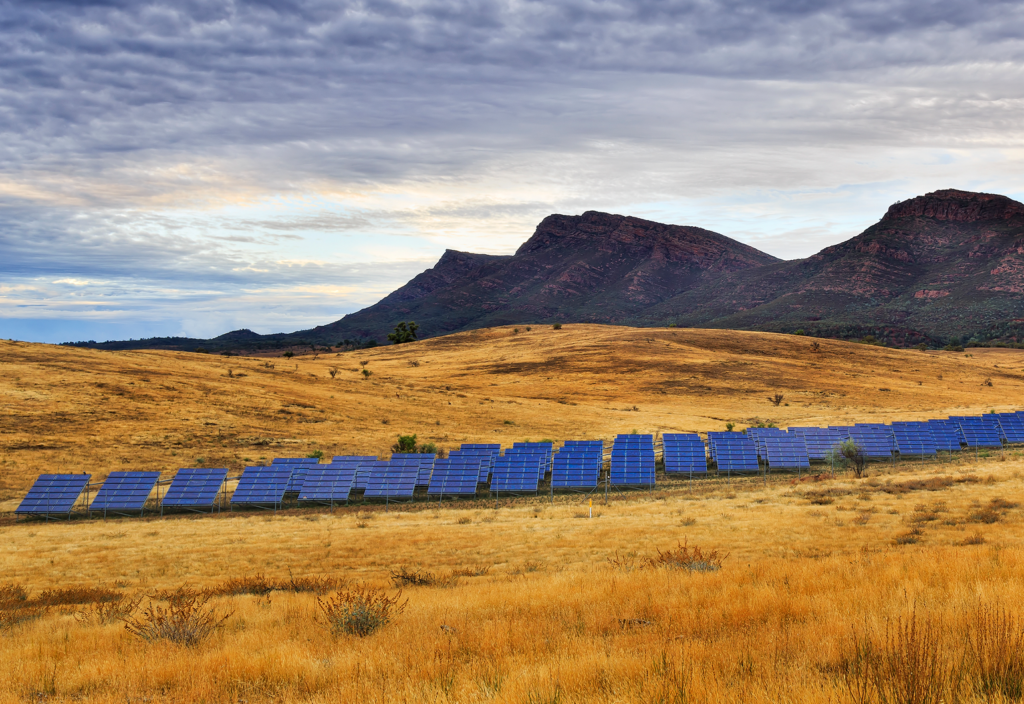Engineers are busy helping small communities achieve their sustainability goals and transition to renewable energy, both in Australia and overseas.
According to Naomi Dickinson, Chair of the Engineers Australia Electrical College Victoria Branch, the roll-out of renewable energy has proved difficult for policy makers to deal with at a national level.
“It is nevertheless an important part of Australia’s energy future and is happening despite the lack of a suitable policy framework to ensure smooth transition from conventional energy sources to renewable sources,” she told create.
Dickinson explained that engineers play a critical role in guiding governments and communities to make appropriate and sustainable technology choices that meet client and community expectations in the long term.
An important challenge during this transition is planning and designing effective solutions to make the shift to clean energy. According to Moreland Energy Foundation CEO Alison Rowe, this will incorporate digital technologies and require collaboration between many engineering disciplines – including civil, electrical and software engineering.
“We then need to develop the business models required to provide energy services to the community,” she added.
Global issue, local drivers
To raise awareness about current community energy initiatives, the Electrical College Victoria Branch and the Electrical Energy Society of Australia – Victoria co-hosted an Engineers Australia event dubbed Energising the Community.
As well as Rowe, the line-up of speakers included Ruby Heard – an electrical engineer with experience in delivering renewable energy projects in Australia, the US and Ethiopia – and Scott Ferraro, Program Director of the Net Zero Initiative at Monash University.
Heard recently returned from a six-month project with Engineers Without Borders in Ethiopia, where she taught refugee energy cooperatives how to design, build and maintain solar and battery storage mini-grids. She commented that while the transition to renewable energy is happening globally, drivers differ between developed and developing communities.
In developing communities, people are looking for access to affordable, reliable energy, and renewables can be a good replacement for diesel generators, which are more costly and harder to maintain in the long term. Some remote Indigenous communities, including Nauiyu (Daly River) in the Northern Territory, have also gone down this route.
In developed communities, such as Australia and the US, the focus is on reducing emissions and bringing the cost of energy down, Heard said.
Renewable energy projects are also seen as a way to create jobs as the fossil fuel industry winds down, Heard added.
Rowe’s work with the not-for-profit Moreland Energy Foundation is focused on delivering reduced energy costs stemming from renewable energy projects to those who need them most. One initiative is installing solar panels on the rooftops of Council-owned buildings across multiple sites.
“The solar generated will then be sold at a discounted price to vulnerable members of the community,” Rowe explained.
Rowe is also working with other organisations to improve the reliability and affordability of energy in Indigenous communities with renewable solutions.
Going off-grid
While grid-scale renewable energy solutions are on the rise, Heard said there are lots of off-grid opportunities for renewable energy to supply a new power need, or replace or complement existing fossil fuel systems.
Microgrids and mini-grids are small-scale standalone power networks. Heard explained that microgrids have a connection to the main grid, but can be ‘islanded’ to operate independently – for example, if a storm takes out the main network. Mini-grids do not have a connection to the main grid and always operate in isolation, making them well suited to the needs of remote communities.
As part of its goal of achieving net-zero carbon emissions by 2030, Monash University is building a microgrid at its campus in Clayton, Victoria.
“We’ll be connecting 20 buildings, 1 MW of photovoltaic solar, electric vehicle chargers and 1 MWh of battery storage, and aiming to replicate a small city with individual customers,” Ferraro told create.
Ferraro said microgrids allow greater flexibility in demand, and could potentially provide dispatchable power to the grid at a lower cost than other sources. However, challenges such as integration, market access and creation, and regulatory hurdles need to be overcome.
“That’s why doing this project in a university setting is so great as you can bring the industry and academic pursuits together to solve these problems,” he added.
Engineers Australia Electrical College Chair Dr Peter Sokolowski said engineers’ ability to make theoretical scientific solutions into reality places them in a good position to move the globe towards cleaner energy – whether that be on or off the grid.
“Being trained to have the community’s best interests at heart, engineers are imperative both technically and in leadership to achieve a balanced energy solution so our future generations can enjoy an improved world, not a lesser one,” he told create.
Heard added that the support of financiers, planners, policymakers and developers is also needed to move forward.
Both Heard and Ferraro recommended volunteering as a good route for engineers wanting to gain experience with renewable energy projects, which they can then apply to their professional careers.
